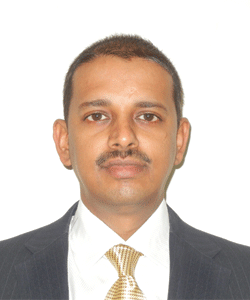
McDonald: What are your top IT priorities for the next 12 to 18 months?
Ramakrishnan: The top priorities for us over the next 12 to 18 months – from a technology point of view – are increasing the use of server virtualisation, data architecture, data analysis, financial inclusion and core banking upgrades.
McDonald: ING Vysya has recently stated it now has the fastest electronics payments processor in the country. How critical is continued investment in National Electronic Fund Transfer (NEFT) and Real-Time Gross Settlement (RTGS) technologies to drive future growth?
Ramakrishnan: India is experiencing a large shift in how payments are sent, as electronic payment networks gain a strong foothold in the country. The benefits of wire-transfer are speed, safety and superior customer service.
If you look at paper payment instruments – cheques, demand drafts and cash – these have existed in India since the 19th century. As recently as 2003, 86 per cent of all non-cash payments in India were still made through the use of paper instruments, with electronic payments only just beginning to take off. Since then, electronic payments have grown by at least 60 per cent year-on-year, and by mid-2009 electronic payments represented 33 per cent in volume and 62 per cent in value of all payments made in India. There has been a five per cent decline in cheque clearing during 2008-2009 financial year compared to the 2007-2008 financial year. Looking at these statistics, there’s enough opportunity for banks to move from paper to electronic. I am sure that NEFT and RTGS will gain momentum and that’s the way forward for a faster turn-around.
The Reserve Bank of India (Central Bank)’s efforts to make the RTGS and NEFT processes as common as cheques are today, are paying off. Increasingly, banks are offering their customers innovative payment services that are faster, cheaper and safer for all concerned. To realise the cost and efficiency benefits from shifting to electronic payments, it is imperative to develop a comprehensive Paper-to-Electronic (P2E) change management solution.
At ING Vysya, we have done system re-architecture and automation as part of our Payments Programme. This includes automated payee name validation for all inward processes. Payment processors are the most sensitive areas of operations and we designed fail-safe systems that worked flawlessly from day one. The fuzzy logic built in for payee name validation has to be suitable for Indian names and conditions. Since payee name validation was at the heart of Straight-Through-Processing (STP) we had to get this absolutely right and we have done.
McDonald: What key challenges are currently facing ING Vysya’s Core Banking Unit and what strategies are in place to address these?
Ramakrishnan: We are reasonably satisfied with our core banking system. We are nevertheless going in for an upgraded version to reap the benefits of true Service Oriented Architecture (SOA) implementation, easier maintainability and faster time to market. We are also working on real time replication of data for our analytical needs, and towards true 24/7 availability.
McDonald: Given the pace of growth in India’s banking industry, what adaptive and flexible systems are you putting in place to manage the market’s expanding customer base?
Ramakrishnan: Our focus is continuously on providing a world class solution to our customers. If you look at our RTGS & NEFT processing, we are the fastest electronic payment processor in the country. In fact, we have developed the RTGS and NEFT processing functionality within the core banking system.
We have also introduced online trading by integrating with a third party solution a real-time mode that makes Application Programming Interface (API) calls between core banking and the trading engine using Enterprise Service Bus (ESB) as a middleware. We went live with this project in a record time of 30 days. This clearly shows that our time-to-market is pretty good from a technology point of view.
Our philosophy is every customer of ours should have an enjoyable experience – making the bank “Easy to Deal With,” as ING’s motto goes.
McDonald: To what extent is ING Vysya considering moving software, storage and infrastructure to the cloud in order to keep up with India’s economic expansion?
Ramakrishnan: No to public cloud. While scepticism prevails around the adoption of public cloud, due primarily to data security concerns, private cloud adoption seems to be making traction. If we watch carefully, virtualisation and Software-as-a-Service (SaaS) are the underlying elements of cloud computing. There has been prominent adoption of former, but not the latter in the banking segment.
In India, co-operative banks, as well as a few scheduled banks, have been using hosted services for a long time now, which is very similar to private could. In private cloud, virtualisation is the key element and banks have been adopting this for quite some time. At ING Vysya we have virtualised our production systems and we are heading towards a private cloud. Virtualisation has yielded significant benefits in our IT organisation, in particular, it has allowed us to provide scalable infrastructure.
McDonald: What do you foresee as the next ‘big thing’ in banking innovation?
Ramakrishnan: Traditional banking models cover just under half of India’s population. The next material innovation in the Indian context (and indeed in the context of all developing economy countries) would be to build banking models and delivery mechanisms that extend banking services to the unbanked. We believe that the key driver will be India’s ambitious Aadhaar project by the Unique Identification Authority of India (UIDAI), which seeks to provide biometric-based enrolment and authentication services to all Indian residents. Which, at 1.3 billion people, would be the most audacious and path breaking innovation in centralised identity enrolment and authentication attempted, ever.
McDonald: Core banking modernisation is often associated with the highly expensive task of overhauling legacy systems. In your experience, what is the most promising and cost effective technology aiding IT core modernisation?
Ramakrishnan: Progressive modernisation is the right way to go. Key steps we follow are: identifying the legacy systems which are to be replaced; doing a cost benefit analysis and justifying the capital investment; and finally ensuring deployment of new systems are aligned with business priorities – this will help in achieving a faster ROI.
McDonald: India’s population is rapidly embracing mobile and online banking technology. How is ING Vysya adapting to this emerging trend; and is the Bank moving toward an increasingly branchless banking model?
Ramakrishnan: We are one of the early movers in mobile banking implementation. We implemented our mobile banking solution in 2008 and have now reached a stage of platform renewal. We have a three pronged approach to mobile banking: SMS based banking at the base; third-party applications and mobile malls for the mass market; and an exclusive platform for high end mobile and tablet platforms, which is under development.
We have had a comprehensive internet banking channel (“Mibank”) for a long time, and have very recently added an exclusive business banking and corporate banking channel called ING Converge, which has gained excellent traction in the marketplace.
McDonald: Every IT leader, particularly at your level, has a legacy they wish to be remembered for. What is yours?
Ramakrishnan: I would like to be remembered as a person who drives transformation.





